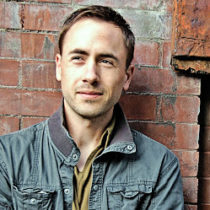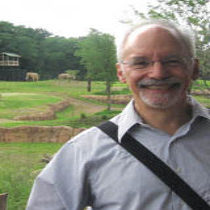Landscape Architecture for Landscape Architects › Forums › SUSTAINABILITY & DESIGN › Sustainable Landscapes
- This topic has 1 reply, 5 voices, and was last updated 14 years ago by
 Trace One.
Trace One.
-
AuthorPosts
-
March 31, 2010 at 11:07 pm #170314
 Bryan BaileyParticipant
Bryan BaileyParticipantI stumbled onto this article by Robert L. Thayer, Jr. (see below) and I think he makes a lot of excellent points. Anyone care to comment?
The evolving concept of the sustainable landscape is a welcome and necessary addition to the philosophy, theory, and practice of landscape architecture. This paper presents a number of arguments relating to the character of sustainable landscapes and the manner in which they may …be experienced by people. It argues that mainstream landscape architecture remains driven by “cosmetic” notions of aesthetic quality and that the sustainable landscape movement still represents a “counter-cultural” current in theory, practice, and style. The traditional notion of “aesthetics” is presented as insufficient to describe the totality of the experiential quality of sustainable landscapes. Because of the increasing depth and complexity of what is known about ecological and environmental relationships, the experience of sustainable landscapes will likely be highly dependent upon information content. Sustainable landscapes are unlikely to involve a dominant visual “style” because they are pluralistic, and, of necessity, highly responsive to individual conditions of both culture and ecosystem. However, intentionally designed, sustainable landscapes may sometimes be perceived as violations of existing (i. e., non-sustainable) regional or spatial context. Exact replication of “natural,” un-peopled analogs for landscape design may not always be successful, due to changes wrought by human use. The generation of new sustainable landscapes relies heavily upon creative, artful interpretations of landscape form, and may result in novel formal and spatial character. The perceivable, experiential characteristics of sustainable landscapes will play a significant role in speeding their diffusion into common use.
~Robert L. Thayer, Jr.
March 31, 2010 at 11:20 pm #170321 Trace OneParticipant
Trace OneParticipantIt’s like every generation has to discover the world anew..I agree with Mr. Thayer that ‘sustainable’ is not main-stream, and cosmetic landscapes are prevalent, but as far as I am concerned, Ian McHarg was talking about sustainable fifty years ago….I feel like this concept has been around so long, why is Mr. Thayer able to accurately depict how it is viewed as new and radical..
However, when Mr. Thayer says “exact replication of ‘natural’ un-peopled analogs for landscape design may not always be successful, due to changes wrought by human use” I am like, “Duh!”..Nothing new there! .Interpretations of what is ‘natural’ have been in play for decades….And when he say the stuff about how “the perceivable, experiential characteristics ..will play a significant role in speeding their diffusion” I am like, well, yeah..If we build these things. people will understand them and use them more..
But what is so difficult – all the ideas are OLD! The application is sysiphisean. (? made-up word!)…Lets get on with it..!April 1, 2010 at 1:06 am #170320 Jason T. RadiceParticipant
Jason T. RadiceParticipant“Sustainability” is a misnomer, and getting clichéd. What IS sustainable? Don’t answer that, it’s a rhetorical question. There are a few very respected LAs, well versed in natural systems, which very much dislike the term “sustainable” because it doesn’t mean anything. It’s greenwashing. Something they teach the kids on earth day.
No planted landscape is sustainable, because it contrived by man. But man must have input to have sustainability. If we didn’t, the landscape would revert back to a natural state with natives or invasives that are regionally prominent. That’s not sustainable because nature is dynamic.
The best we can hope for is the need for man to impart minimal effort to maintain the landscape as it is designed. And just what ARE the aesthetics of sustainability? A lawn can be sustainable if the right turfgrass is selected. The landscapes I design for commercial properties require very little maintenance and no irrigation, for what they are, they are sustainable. And what of forests? Even natural forests are often managed to keep them healthy. So that’s out.
Mr. Thayer seems to be theoretical in thinking, and pedagogical in prose. He really doesn’t say much, though.
April 1, 2010 at 11:54 am #170319 Rob HalpernParticipant
Rob HalpernParticipantI absolutely agree.
Perhaps in the full article he gives his definition of “sustainable,” from from this excerpt we have just so much yatter.And by the way…why can’t humans be a part of “sustainable,” Are we going somewhere? Is pruning or dividing and transplanting un-sustainable? Why is “Exact replication of “natural,” un-peopled analogs ” the highest good? Is sustainability about resource use or about leaving the place neat and tidy for the next species that comes to Earth to dominate when we move on? Why am I always the last one to get the memo about meeting at the Landing Site for the mother ship?
April 2, 2010 at 1:21 am #170318 Bryan BaileyParticipant
Bryan BaileyParticipantThis is where I found the abstract: http://lj.uwpress.org/cgi/content/abstract/8/2/101
I haven’t been able to find the entire text…
April 2, 2010 at 4:29 pm #170317 Bryan BaileyParticipant
Bryan BaileyParticipantI don’t understand what the NY Times editorial page has to do with this post. The abstract by Mr. Thayer, dated or not, still brings to mind a lot of issues about “sustainable” landscapes that Landscape Architects struggle with today. We all moved on a little too fast, didn’t we? Can we solve our current environmental/social issues with the newest, latest technologies – or – do we need to look back for the solutions?
April 2, 2010 at 4:59 pm #170316 Andrew Garulay, RLAParticipant
Andrew Garulay, RLAParticipant“The Landscape” needs to be defined before you can begin to consider whether it even makes sense that the particular landscape should be designed for a certain “lifespan” or if there is any reason to think it should go on for perpetuity.
A landscape with a “lifespan” (generally 10-15 years for most residences) can come and go within the context of sustainable practices (actions that can can come and go for perpetuity without destroying that part of the world in which it exists).
A “disposable” landscape is not necessarily an unsustainable practice.
April 2, 2010 at 9:55 pm #170315 Bryan BaileyParticipant
Bryan BaileyParticipantThanks for explaining. I can agree with that. I find myself inspired by older published work by Ian McHarg and Jane Jacobs but not so much by recent writings… Maybe it’s because McHarg and Jacobs were more like leaders/activists than designer or writer.
-
AuthorPosts
- You must be logged in to reply to this topic.

